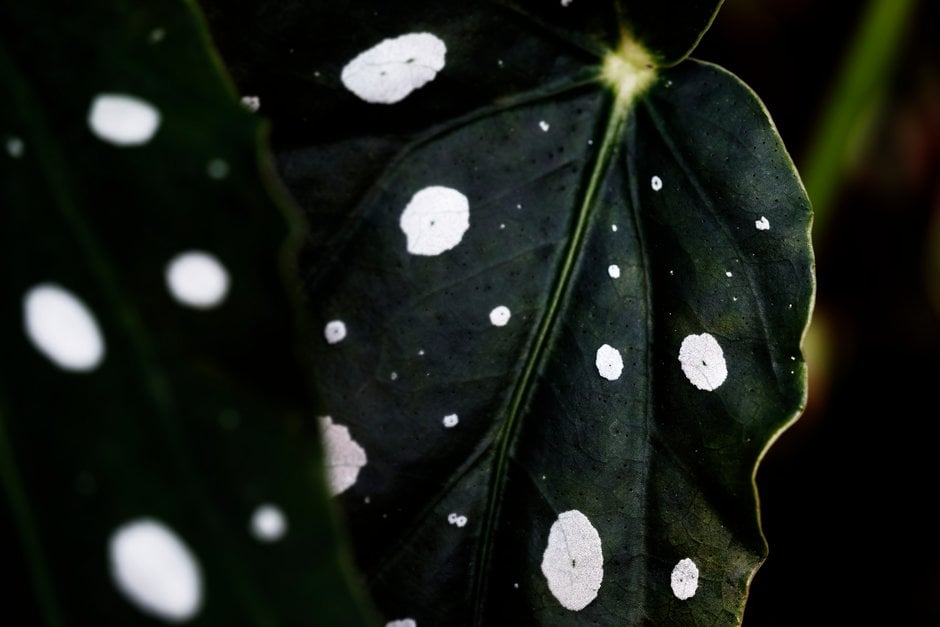Begonia maculata 'Wightii' (C)
begonia 'Wightii'
A vigorous tender perennial with long and narrow green leaves revealing crimson red undersides and covered in silvery white polkadots. Clusters of pinkish, greenish-white flowers with yellow centres appear between January and December. Although this variety prefers a warm spot on a windowsill or in a greenhouse, care should be taken not to place the plant directly in hot sunlight, to avoid leaf scorch.
Size
Ultimate height
0.5–1 metresTime to ultimate height
2–5 yearsUltimate spread
0.1–0.5 metresGrowing conditions
Moisture
Moist but well–drained, Well–drainedpH
Acid, NeutralColour & scent
| Stem | Flower | Foliage | Fruit | |
| Spring | Green Red Grey Silver White | |||
|---|---|---|---|---|
| Summer | Green Red Grey Silver White | |||
| Autumn | Green Red Grey Silver White | |||
| Winter | Pink Green White Yellow | Green Red Grey Silver White |
Position
- Partial shade
Aspect
East–facing or South–facing
Exposure
Sheltered Hardiness
H1BBotanical details
- Family
- Begoniaceae
- Native to GB / Ireland
- No
- Foliage
- Evergreen
- Habit
- Bushy
- Potentially harmful
- Ornamental bulbs - not to be eaten. Wear gloves and other protective equipment when handling. Pets: Ornamental bulbs - not to be eaten - see the HTA guide to potentially harmful plants for further information and useful contact numbers
- Genus
Begonia can be annuals, evergreen or deciduous perennials or shrubs, with fibrous, tuberous or rhizomatous roots and usually asymmetrical leaves, often strikingly patterned, and small or large flowers, both male and female in the same cluster
- Name status
Accepted
- Horticultural Group
- Cane-stem begonias are erect, evergreen perennials with fibrous roots and cane-like stems with asymmetrical, strongly toothed leaves, often strikingly marked, and showy flower clusters in spring or summer
How to grow
Cultivation
Under glass grow in light, well-drained peat-free potting compost in filtered light with shade from hot sun at an optimum of 19°C. Will not tolerate continuous direct sunlight or waterlogging. Water moderately when in growth and apply a balanced liquid fertiliser at alternative waterings. See Begonias: indoors for further advice.
Propagation
Propagate by stem cuttings
Suggested planting locations and garden types
- Patio and container plants
Pruning
Cut back over long canes to 2 or 3 buds in late spring
Pests
May be susceptible to caterpillars, mealy bugs, mites, glasshouse thrips, vine weevil and aphids
Diseases
May be susceptible to grey moulds, powdery mildews, stem rot and rhizome rot
Get involved
The Royal Horticultural Society is the UK’s leading gardening charity. We aim to enrich everyone’s life through plants, and make the UK a greener and more beautiful place.
